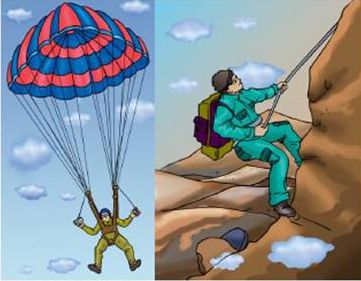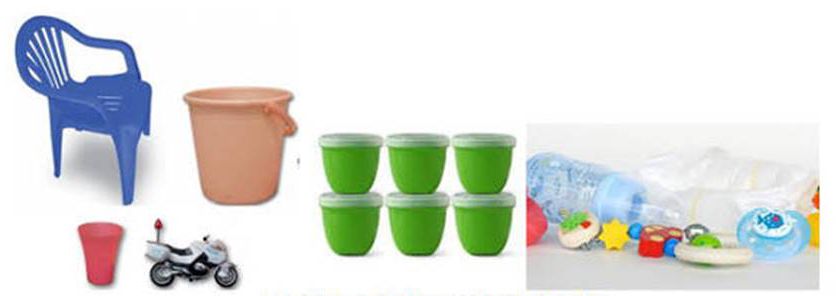The clothes that we wear are made up of fibres, which obtained from natural
or artificial sources. So there are basically two types of fibres-
a) Natural fibres which are obtained from animals and
plants. Ex: cotton, wool, silk,
b) Synthetic fibres which are made by human beings. Ex:
nylon, rayon, etc.
WHAT ARE SYNTHETIC FIBRES?
Synthetic fibre is a chain of small units joined together. Each small unit
is actually a chemical substance. Many small units combine to form one
large unit called as polymer.
TYPES OF SYNTHETIC FIBRES
A)
RAYON
-
Discovered at the end of 19th century.
-
Obtained by the chemical treatment of wood pulp and was the first
synthetic fibre
-
It is similar to silk and is cheaper than silk.
-
Rayon is mixed with cotton to make bedsheet and dress material.
B)
NYLON
-
Made in 1931 without using any natural raw material (from plant or
animal).
-
It is prepared from coal, water and air.
-
It is strong, elastic and light in weight.
-
It is lustrous and easy to wash.
-
Nylon is used in making socks, bags, toothbrush, parachute, etc.
For the same thickness, a nylon thread is stronger than a steel wire.

C)
POLYESTER
-
This fibre does not get wrinkled easily.
-
It is suitable for making dress material.
-
Terylene is the popular polyester.
-
PET (poly ethylene terephthalate) is used for making bottles, utensils,
films,, wires and many other items.
D)
ACRYLIC
-
It is the synthetic fibre which is used in making synthetic wool
materials.
-
It is cheaper and more durable than wool.
-
It is easier to wash and maintain.
CHARACTERISTIC OF SYNTHETIC FIBRES
-
They are more durable.
-
They can be easily washed.
-
They are less expensive than natural fibres.
-
Easy to maintain.
-
They are readily available.
PLASTICS
-
Plastic is a polymer like synthetic fibre.
-
It can be moulded or formed into different shapes and sizes.
-
Plastic can e recycled, reused coloured, melted, and rolled into sheets
or wires.
-
Plastics which get deformed and bent easily on heating are known as thermoplastics. Ex- polythene and PVC. They are used in
making toys, comb etc.
-
Plastics which when moulded once, cannot be softened by heating are
called thermosetting plastics. Ex- Bakelite and melamine.

CHARACTERISTIC PROPERTY OF PLASTICS
1)
Plastic is non reactive
Plastic do not react with water or air. They do not corrode easily. That is
why they are used to store various kind of material, including many
chemicals.
2) Plastic is light, strong and durable
It can be moulded into various shape and sizes, it used for various
purposes.
3) Plastics are poor conductors
They are poor conductors of heat and electricity. So they are used to make
the covering of electricity wires and handles of tools.
PLASTIC AND THE ENVIRONMENT
Biodegradable-
a material which get decomposed by natural process such as action of
bacteria, is called biodegradable material.
Non biodegradable
- a material which cannot be easily decomposed easily by the natural
process is known as non biodegradable material.
Disposal of plastic is a major problem. let us see how-
Plastics are non-biodegradable and do not decompose over several of years.
when they are burned they release lots of toxic and poisonous fumes into
the atmosphere causing air pollution.
Some solutions to this problem
-
-
Avoid the use of plastic as far as possible.
-
Carry cotton or jute bags for shopping.
-
Do not throw plastic bags or other plastic items into water bodies or on
roads.
-
Reuse and recycling of plastic should be encouraged.